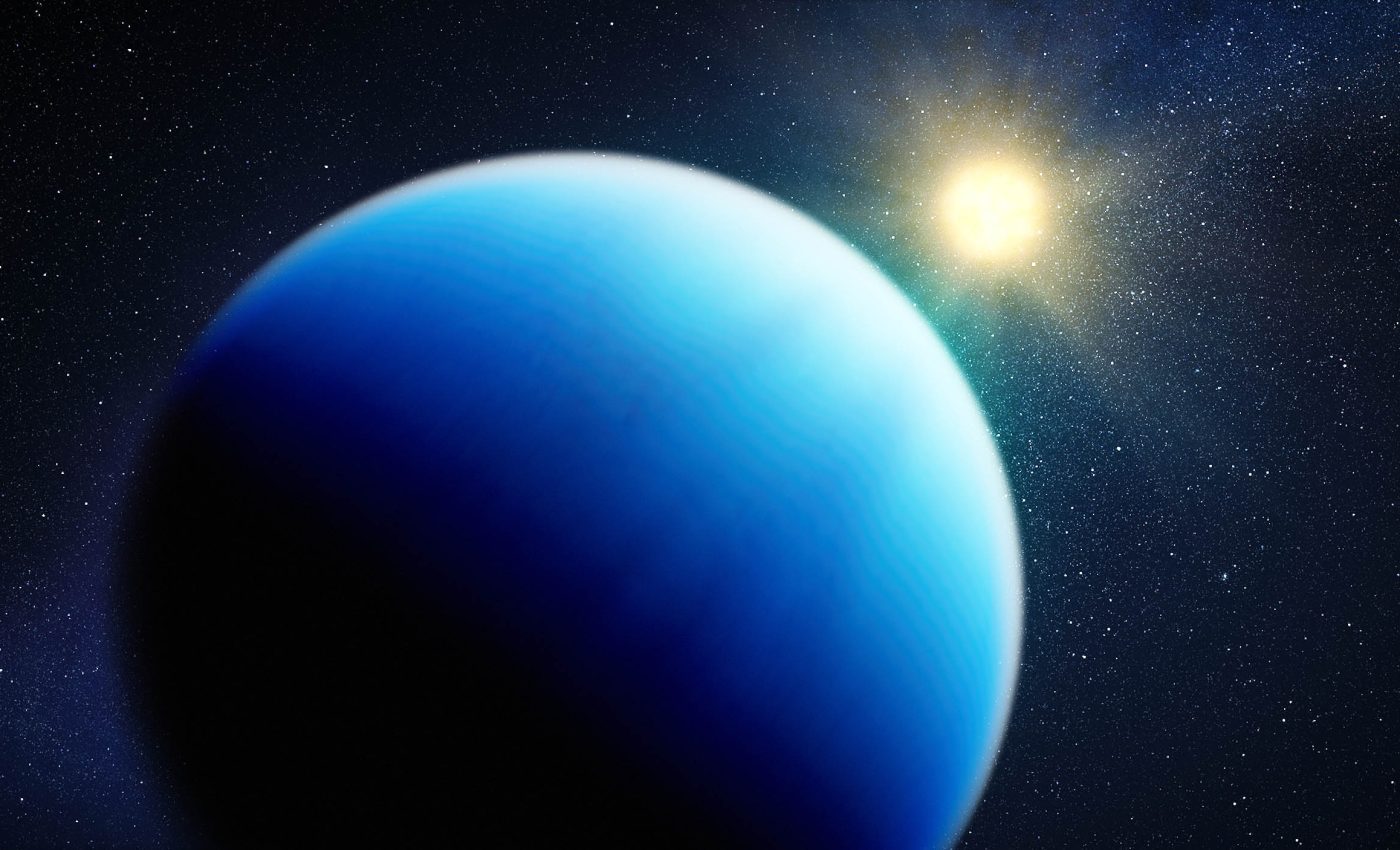
Webb telescope gets a clear view of a very hot alien world
Sub-Neptunes may not orbit our Sun, but they are everywhere in our galaxy. These planets – bigger than Earth, smaller than Neptune – make up the most common type of exoplanet we’ve found so far.
Despite their abundance, much about them remains a mystery. That’s especially true when it comes to their thick, cloudy atmospheres.
But thanks to NASA’s James Webb Space Telescope (JWST), that’s starting to change. A new observation of one of these planets, TOI-421 b, is offering an unusually clear view – literally – of what lies inside a sub-Neptune’s skies.
Breakthrough in exoplanet research
Scientists from the University of Maryland have been waiting a long time for this. With Webb’s advanced technology, they finally have the tools to study sub-Neptune atmospheres in detail.
“I had been waiting my entire career for Webb so that we could meaningfully characterize the atmospheres of these smaller planets,” said Eliza Kempton.
“By studying their atmospheres, we’re getting a better understanding of how sub-Neptunes formed and evolved, and part of that is understanding why they don’t exist in our solar system.”
These planets were first spotted by NASA’s Kepler space telescope. At the time, they were a surprise. Now, astronomers are racing to figure out why they’re so common, and what their thick atmospheres are hiding.
Rare, clear atmosphere on TOI-421 b
Sub-Neptunes are difficult to observe. They’re larger than Earth but much smaller and cooler than gas giants like Jupiter. Their faint signals make it hard to see what’s in their skies.
Before Webb, almost every sub-Neptune that researchers looked at returned what’s called a flat transmission spectrum.
That means no chemical fingerprints were visible – just a blank line. Scientists believed that haze or clouds were blocking their view.
That’s why TOI-421 b stood out. It looked like it might be different.
Atmospheric composition of TOI-421 b
“Why did we observe this planet, TOI-421 b? It’s because we thought that maybe it wouldn’t have hazes,” confirmed Kempton.
“And the reason is that there were some previous data that implied that maybe planets over a certain temperature range were less enshrouded by haze or clouds than others.”
That temperature threshold is around 1,070 degrees Fahrenheit (577 degrees Celsius). Below that, methane reacts with sunlight to form haze.

But above it, planets should be too hot for methane to exist – and that could mean a clearer atmosphere.
TOI-421 b is hotter than that. Its surface temperature is about 1,340 degrees Fahrenheit (727 degrees Celsius). That gave researchers hope, and Webb confirmed it: this planet’s atmosphere is indeed clear.
Unexpected gases detected
Once they had a clear view, the team spotted signs of water vapor in the atmosphere. They also saw hints of carbon monoxide and sulfur dioxide.
Some gases, including methane and carbon dioxide, were absent. And the most surprising element of all? A lot of hydrogen.
“We saw spectral features that we attribute to various gases, and that allowed us to determine the composition of the atmosphere,” said Brian Davenport, a Ph.D. student at the University of Maryland who led the data analysis.
“Whereas with many of the other sub-Neptunes that had been previously observed, we know their atmospheres are made of something, but they’re being blocked by haze.”
The discovery of a hydrogen-rich atmosphere contradicted the researchers’ expectations.
“We had recently wrapped our mind around the idea that those first few sub-Neptunes observed by Webb had heavy-molecule atmospheres, so that had become our expectation, and then we found the opposite,” said Kempton.
This suggests TOI-421 b may have taken a different path during its formation and evolution.
Star and planet match
The composition of TOI-421 b’s atmosphere also looked similar to gases present in the star it orbits.
“If you just took the same gas that made the host star, plopped it on top of a planet’s atmosphere, and put it at the much cooler temperature of this planet, you would get the same combination of gases,” said Kempton.
This is more like what we see in the gas giants of our own solar system, not other sub-Neptunes observed by Webb.
Another difference is that TOI-421 b orbits a Sun-like star. Most previously observed sub-Neptunes have orbited much smaller red dwarfs. That might explain some of the differences – or maybe TOI-421 b is simply unique.
Finding more planets like TOI-421 b
To figure out if TOI-421 b is a one-off or part of a bigger pattern, scientists want to observe more sub-Neptunes in similar temperature ranges.
If more hot, clear-skied sub-Neptunes turn up, that could give us a new window into how these planets form and what they’re made of.
“We’ve unlocked a new way to look at these sub-Neptunes,” said Davenport. “These high-temperature planets are amenable to characterization. So by looking at sub-Neptunes of this temperature, we’re perhaps more likely to accelerate our ability to learn about these planets.”
One thing’s clear: TOI-421 b is no ordinary planet. But, with Webb’s help, scientists are just beginning to uncover the secrets hidden behind the haze.
The full study was published in The Astrophysical Journal letters.
—–
Like what you read? Subscribe to our newsletter for engaging articles, exclusive content, and the latest updates.
Check us out on EarthSnap, a free app brought to you by Eric Ralls and Earth.com.
—–













